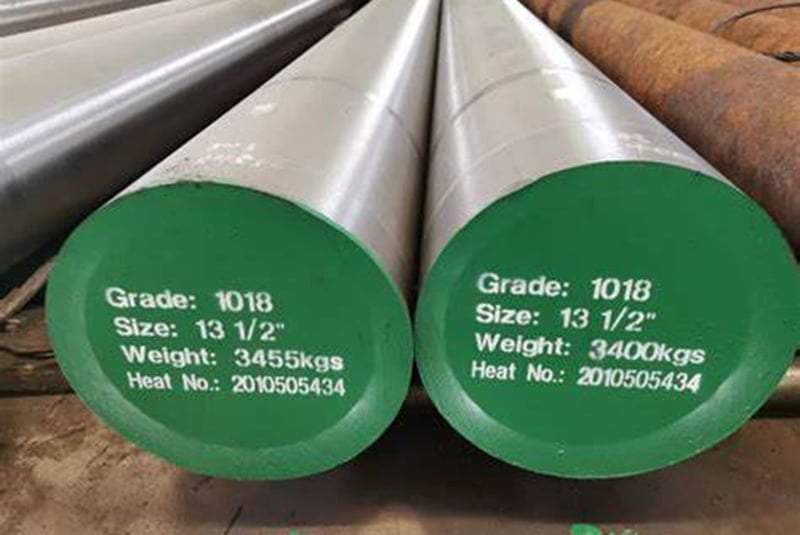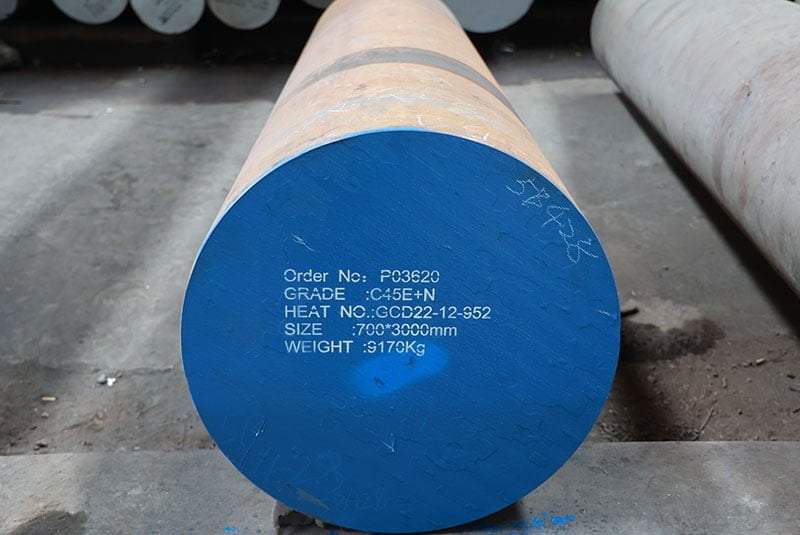Introduction
Carbon steel is a vital material in various industries due to its versatile properties and cost-effectiveness. From construction to manufacturing, the mechanical properties of carbon steel make it an essential component in countless applications. This comprehensive guide will delve into the various aspects of carbon steel properties, including its composition, types, mechanical characteristics, and applications. Whether you are an engineer, manufacturer, or student, understanding carbon steel properties will provide valuable insights into its role and benefits in different fields.
What is Carbon Steel?

Definition and Composition
Carbon steel is an alloy consisting primarily of iron and carbon. The carbon content in carbon steel typically ranges from 0.2% to 2.1% by weight. This variation in carbon content significantly impacts the steel’s properties, making it suitable for different applications. In addition to carbon, other elements such as manganese, silicon, and copper may be present in small amounts to enhance specific properties.
Types of Carbon Steel
Carbon steel is categorized into three main types based on its carbon content:
Low Carbon Steel (Mild Steel): Contains up to 0.3% carbon. It is highly ductile and weldable, making it ideal for construction and automotive applications.
Medium Carbon Steel: Contains 0.3% to 0.6% carbon. It offers a balance between strength and ductility, suitable for manufacturing gears, axles, and structural components.
High Carbon Steel: Contains 0.6% to 2.1% carbon. It is the hardest and strongest type of carbon steel, used for high-strength applications such as cutting tools and springs.
Mechanical Properties of Carbon Steel
Strength
Strength is a critical property of carbon steel, determining its ability to withstand applied forces without deformation or failure. It includes several measures:
- Tensile Strength: The maximum tensile stress that a material can withstand before breaking.
- Yield Strength: The stress at which a material begins to deform plastically.
- Compressive Strength: The maximum compressive stress a material can withstand without failure.
Hardness
Hardness refers to the resistance of carbon steel to deformation, particularly permanent deformation, indentation, or scratching. Hardness is influenced by the carbon content and heat treatment processes. Common hardness tests include the Brinell, Rockwell, and Vickers hardness tests.
Ductility
Ductility is the ability of carbon steel to undergo significant plastic deformation before rupture. It is crucial for materials that need to be shaped, bent, or drawn into wires. Low carbon steel exhibits higher ductility compared to medium and high carbon steels.
Toughness
Toughness measures the ability of carbon steel to absorb energy and plastically deform without fracturing. It combines strength and ductility and is vital for materials subjected to impact and dynamic loads. Toughness is typically measured using the Charpy impact test.
Elasticity
Elasticity is the ability of carbon steel to return to its original shape after the removal of a stress that caused deformation. The modulus of elasticity (Young’s modulus) quantifies this property and indicates the stiffness of the material.
Fatigue Resistance
Fatigue resistance refers to the ability of carbon steel to withstand repeated cycles of stress without developing cracks or failing. It is a critical property for materials used in components that experience fluctuating loads, such as bridges and aircraft.
Wear Resistance
Wear resistance is the ability of carbon steel to resist surface abrasion and erosion. This property is particularly important for materials used in applications involving friction and wear, such as gears and bearings.
Factors Affecting Carbon Steel Properties
Carbon Content
The carbon content in steel significantly influences its mechanical properties. As the carbon content increases, the steel becomes harder and stronger but less ductile and more difficult to weld.
Heat Treatment
Heat treatment processes, such as annealing, quenching, and tempering, can alter the mechanical properties of carbon steel. For example, quenching increases hardness and strength, while tempering improves ductility and toughness.
Alloying Elements
Other elements, such as manganese, silicon, and copper, can be added to carbon steel to enhance specific properties. Manganese improves hardenability and tensile strength, while silicon increases strength and hardness.
Microstructure
The microstructure of carbon steel, which includes the arrangement and distribution of its constituent phases, affects its mechanical properties. The microstructure can be controlled through heat treatment and alloying.
Comparison of Carbon Steel Properties
| Property | Low Carbon Steel | Medium Carbon Steel | High Carbon Steel |
|---|---|---|---|
| Carbon Content | Up to 0.3% | 0.3% to 0.6% | 0.6% to 2.1% |
| Tensile Strength | Low | Moderate | High |
| Ductility | High | Moderate | Low |
| Hardness | Low | Moderate | High |
| Toughness | High | Moderate | Low |
| Weldability | Excellent | Good | Poor |
| Common Uses | Construction, Automotive | Gears, Axles, Machinery | Cutting Tools, Springs |
Detailed Comparison
Low Carbon Steel
Low carbon steel, also known as mild steel, is characterized by its high ductility and excellent weldability. It is the most widely used type of carbon steel due to its versatility and cost-effectiveness. Common applications include structural beams, automotive body panels, and pipelines.
Medium Carbon Steel
Medium carbon steel offers a balance between strength and ductility, making it suitable for applications that require higher tensile strength than low carbon steel but still need some level of ductility. It is commonly used in the manufacturing of gears, axles, and structural components.
High Carbon Steel
High carbon steel is known for its high hardness and strength, but it is also more brittle and less weldable compared to lower carbon steels. This type of steel is used in high-strength applications, such as cutting tools, springs, and high-wear components.
Applications of Carbon Steel

Construction
Carbon steel is extensively used in the construction industry for structural beams, columns, and reinforcing bars. Its strength, ductility, and weldability make it an ideal material for building durable and safe structures.
Automotive
In the automotive industry, carbon steel is used for manufacturing body panels, chassis components, and engine parts. Its ability to withstand impact and dynamic loads makes it suitable for safety-critical applications.
Manufacturing
Carbon steel is a fundamental material in the manufacturing industry, used for making machinery, tools, and equipment. Its versatility allows it to be shaped into various forms and components.
Oil and Gas
The oil and gas industry relies on carbon steel for pipelines, storage tanks, and drilling equipment. Its resistance to high pressure and harsh environments ensures the safe and efficient transport of oil and gas.
Aerospace
In aerospace applications, carbon steel is used for landing gear, fasteners, and structural components. Its high strength-to-weight ratio is crucial for the performance and safety of aircraft.
Energy
Carbon steel is used in power generation plants for making boilers, turbines, and heat exchangers. Its ability to withstand high temperatures and pressures is essential for efficient energy production.
Tools and Hardware
High carbon steel is commonly used for making cutting tools, hand tools, and hardware. Its hardness and wear resistance ensure the longevity and performance of these tools.
Conclusion: Carbon Steel Properties
Understanding the properties of carbon steel is crucial for selecting the right material for various applications. The mechanical properties such as strength, hardness, ductility, and toughness, along with the factors that influence these properties, make carbon steel a versatile and widely used material. Whether you are involved in construction, manufacturing, or any other industry, carbon steel provides a reliable and cost-effective solution for your material needs.
FAQ
What is carbon steel?
Carbon steel is an alloy of iron and carbon, with carbon content typically ranging from 0.2% to 2.1%. It is known for its strength, ductility, and affordability, making it a widely used material in various industries.
What are the different types of carbon steel?
Carbon steel is categorized into three main types based on carbon content: low carbon steel (up to 0.3% carbon), medium carbon steel (0.3% to 0.6% carbon), and high carbon steel (0.6% to 2.1% carbon).
How does carbon content affect the properties of carbon steel?
As carbon content increases, carbon steel becomes harder and stronger but less ductile and more difficult to weld. Low carbon steel is more ductile and weldable, while high carbon steel is harder and stronger.
What are the common applications of carbon steel?
Carbon steel is used in construction, automotive, manufacturing, oil and gas, aerospace, energy, and tools and hardware. Its versatility makes it suitable for a wide range of applications.
How does heat treatment affect the properties of carbon steel?
Heat treatment processes such as annealing, quenching, and tempering can alter the mechanical properties of carbon steel. For example, quenching increases hardness and strength, while tempering improves ductility and toughness.
What are the key mechanical properties of carbon steel?
The key mechanical properties of carbon steel include strength, hardness, ductility, toughness, elasticity, fatigue resistance, and wear resistance. These properties are influenced by factors such as carbon content, heat treatment, and alloying elements.
